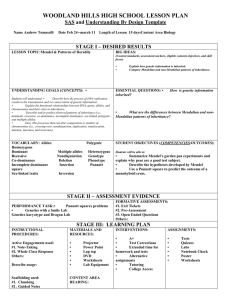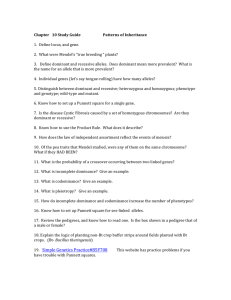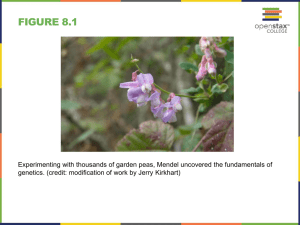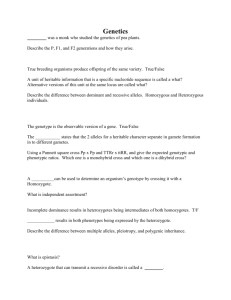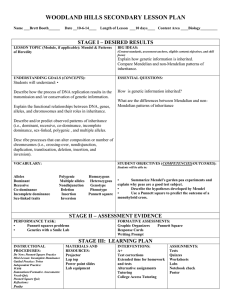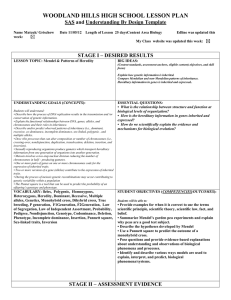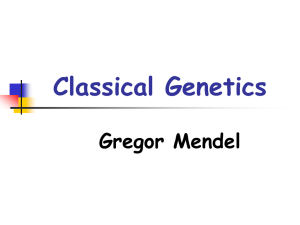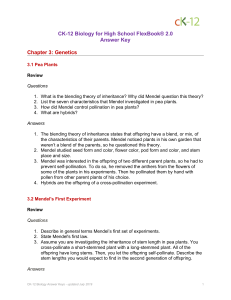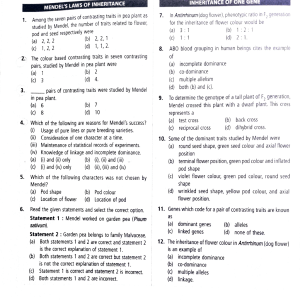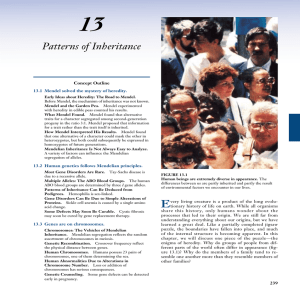Chapter 13/14 Test Review
advertisement
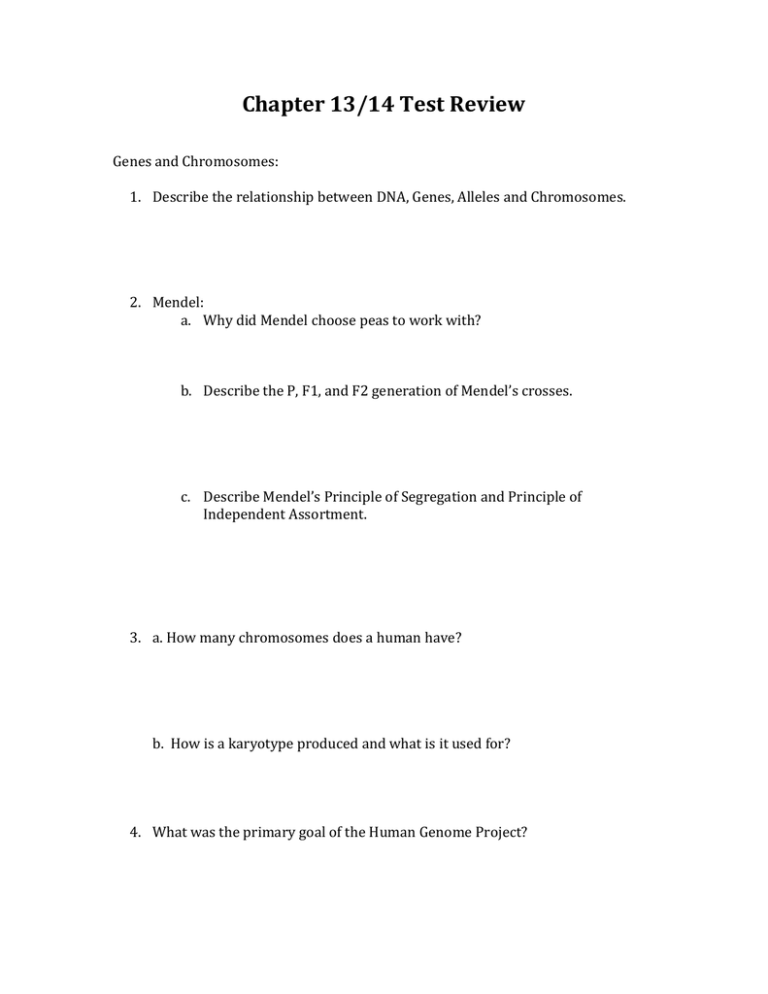
Chapter 13/14 Test Review Genes and Chromosomes: 1. Describe the relationship between DNA, Genes, Alleles and Chromosomes. 2. Mendel: a. Why did Mendel choose peas to work with? b. Describe the P, F1, and F2 generation of Mendel’s crosses. c. Describe Mendel’s Principle of Segregation and Principle of Independent Assortment. 3. a. How many chromosomes does a human have? b. How is a karyotype produced and what is it used for? 4. What was the primary goal of the Human Genome Project? Mendelian Patterns of Inheritance: 5. How is the probability that a given event will occur calculated? 6. Give an example, using a punnett square, of a monohybrid cross. 7. Explain the difference between the following words a. Dominant vs. Recessive b. Genotype vs. Phenotype c. Homozygous vs. Heterozygous 8. Give an example, using a punnett square, of a dihybrid cross. Tall and Red are dominant Short and white are recessive Cross a heterozygote tall, red plant (TtRr) with a homozygous recessive short, white plant (ttrr) 9. Describe or show with a diagram how gametes are formed and the sex of offspring are determined. Other Patterns of Inheritance 10. Give an example of incomplete dominance 11. Co-dominance/Multiple Alleles and Blood Type: a. What determines blood type? b. Explain how blood type can be an example of codominance. c. Explain how blood type can be an example of multiple alleles. d. List the possible blood types e. Should a person with Type A blood receive a transfusion of type o blood? 12. If two genes are located far apart on a chromosome are they more or less likely to be inherited together? Explain. 13. X-linked traits. a. Define x-linked trait. b. If a Mother, who is a carrier for the color-blind trait has children with a color-blind male, what are the chances the daughters will be color-blind? Sons? Use a punnett square to show your work. 14. Describe what happens during non-disjunction. What can this result in? 15. Describe and give examples of characteristics that are controlled by many genes. Chapter 14. 16. Given the following pedigree figure the mode of inheritance.
